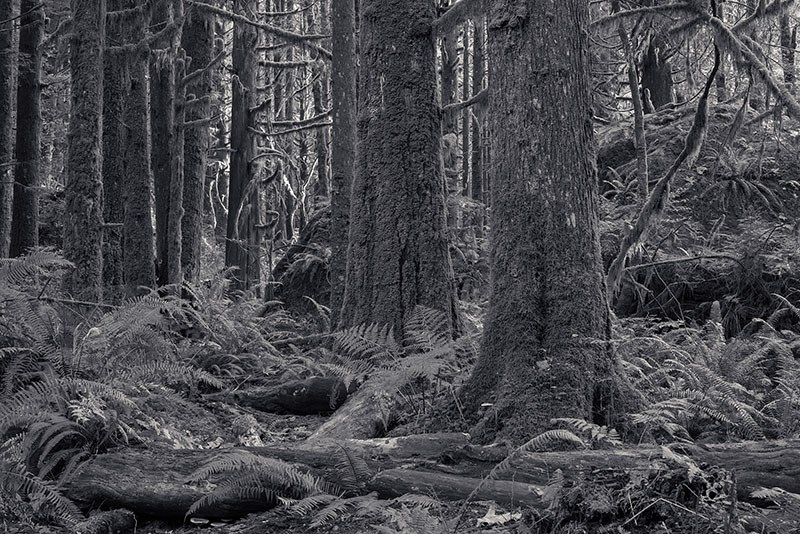His days growing up hiking and camping around the northeastern part of the Tri-Cities set the stage for his career in the arts.
Back then, Joseph Therrien explored DeBoville Slough and Minnekhada regional park with his friends and fellow Cubs and Scouts.
The area had not seen much development and the semi-rural charm piqued Thierren’s love for nature.
As a teen, he discovered the pictures of Ansel Adams, the renowned photographer and environmentalist who captured black and white landscapes of the American west.
Thierren was immediately entranced. “I saw in his work some of the things I was experiencing myself,” he said. “I thought, ‘Wow, that’s amazing. I would love to do that.’”
And so, at the age of 17, Thierren bought a cheap, Russian-made Zenit-E camera and set up a darkroom studio at home.
By then, Thierren was also falling in love with other creative forms and was taken under the wing of his Centennial secondary teacher, Don Portelance.
After graduation, Thierren studied at the Vancouver School of Art — later renamed Emily Carr University of Art + Design — but dropped out after two years.
He enrolled in the faculty of education at UBC, majoring in fine arts, and took classes with some of the best art instructors at the time such as Bob Steele, who guided him in printmaking.
Soon, the Port Coquitlam resident gained work as a visual arts teacher in the Surrey school district, helping his students through drawing, painting, ceramics, sculpture and, of course, film photography.
When the industry moved to digital, Thierren was resistant at first. Digital photography was still in its infancy and the cost of a digital camera was prohibitive.
But he could see the technology moving quickly and Thierren eventually decided to jump on the bandwagon. A decade ago, he took a course and bought his first digital camera.
However, he continued to teach the basics of film photography to his students as well. “They learned how to use aperture and shutter speeds so when they went to digital, they had some tools. Digital isn’t just point and shoot.”
Two years ago, around the same time he retired, Thierren could see the digital advances had taken a significant leap so he picked up a new camera: a Nikon D800. He also purchased an Epsom printer and “I’m getting results that, in my opinion, look like silver gelatin prints from a dark room. It’s remarkable.”
Now, Thierren travels to places near and far to compose ideal landscape photos.
On Friday, he’ll open an exhibit at Coquitlam’s Place des Arts — ironically, the same facility where Portelance teaches gifted art students — and will show 24 pieces documented over the past two years. There are images of his beloved DeBoville Slough, Golden Ears Park, Pitt Meadows and the Fraser Canyon. He also added scenes from a trip to Yellowstone Park.
None are in colour. “I think in black and white,” he said.
Thierren is pleased with the results of his show. “It reflects a lot of how I feel about nature. They are interpreted through my inspiration of Ansel Adams and other black-and-white landscape photographers like John Sexton.”
He added, “It’s hard to describe the love of nature as expressed through photography. It’s hard to capture it. Sometimes, you feel the place but the light is wrong or the time of day isn’t right. But you try to use your skills to express that feeling you see before you, which can be breathtaking.”
• The opening reception for Joseph Thierren’s exhibit is Friday, Sept. 11 at 7 p.m. at Place des Arts (1120 Brunette Ave., Coquitlam). Also opening that night are displays from Jeanette Sirois and Place des Arts’ teachers and staff. Admission is free. Call 604-664-1636 or visit placedesarts.ca.
[email protected]
@jwarrenTC



